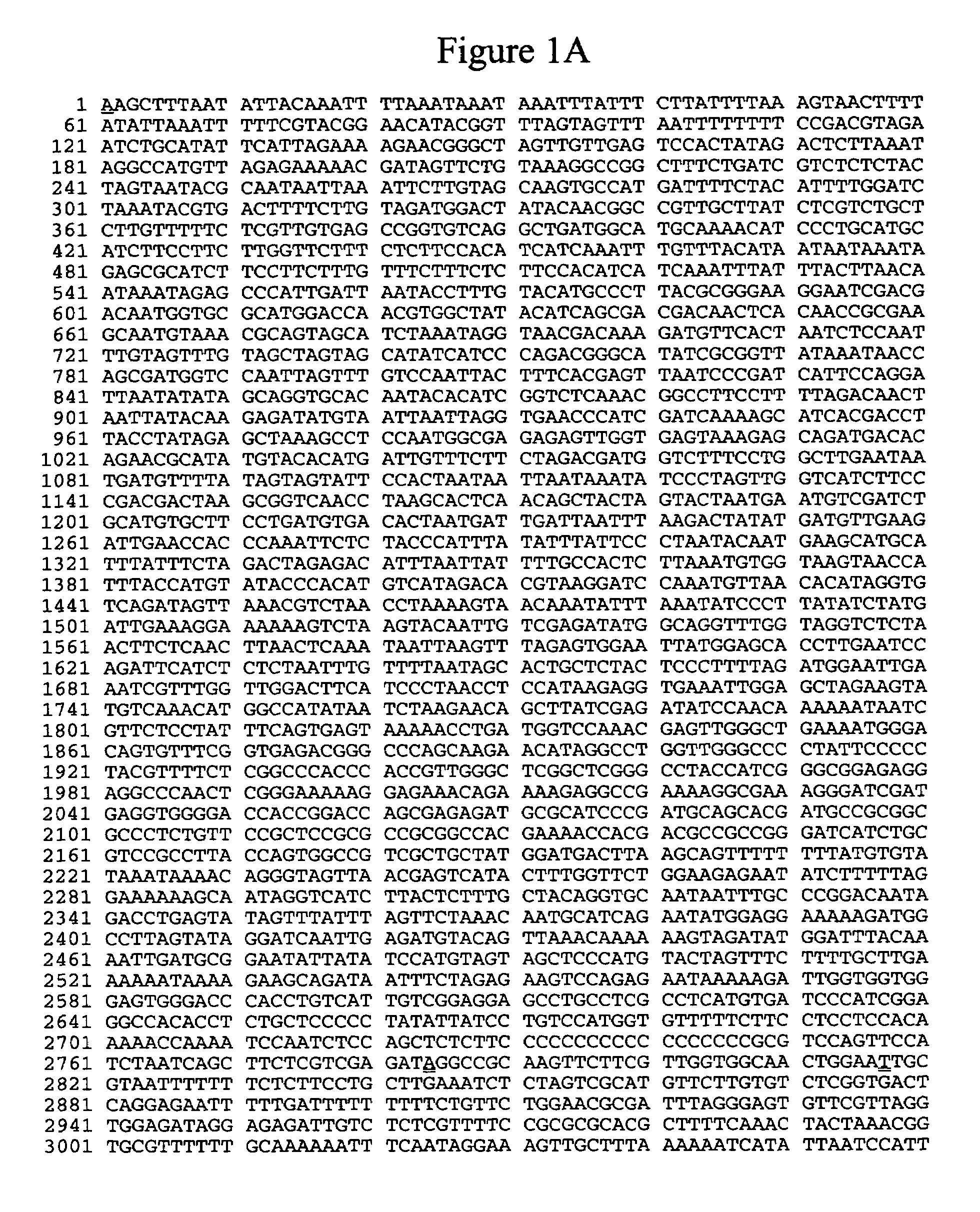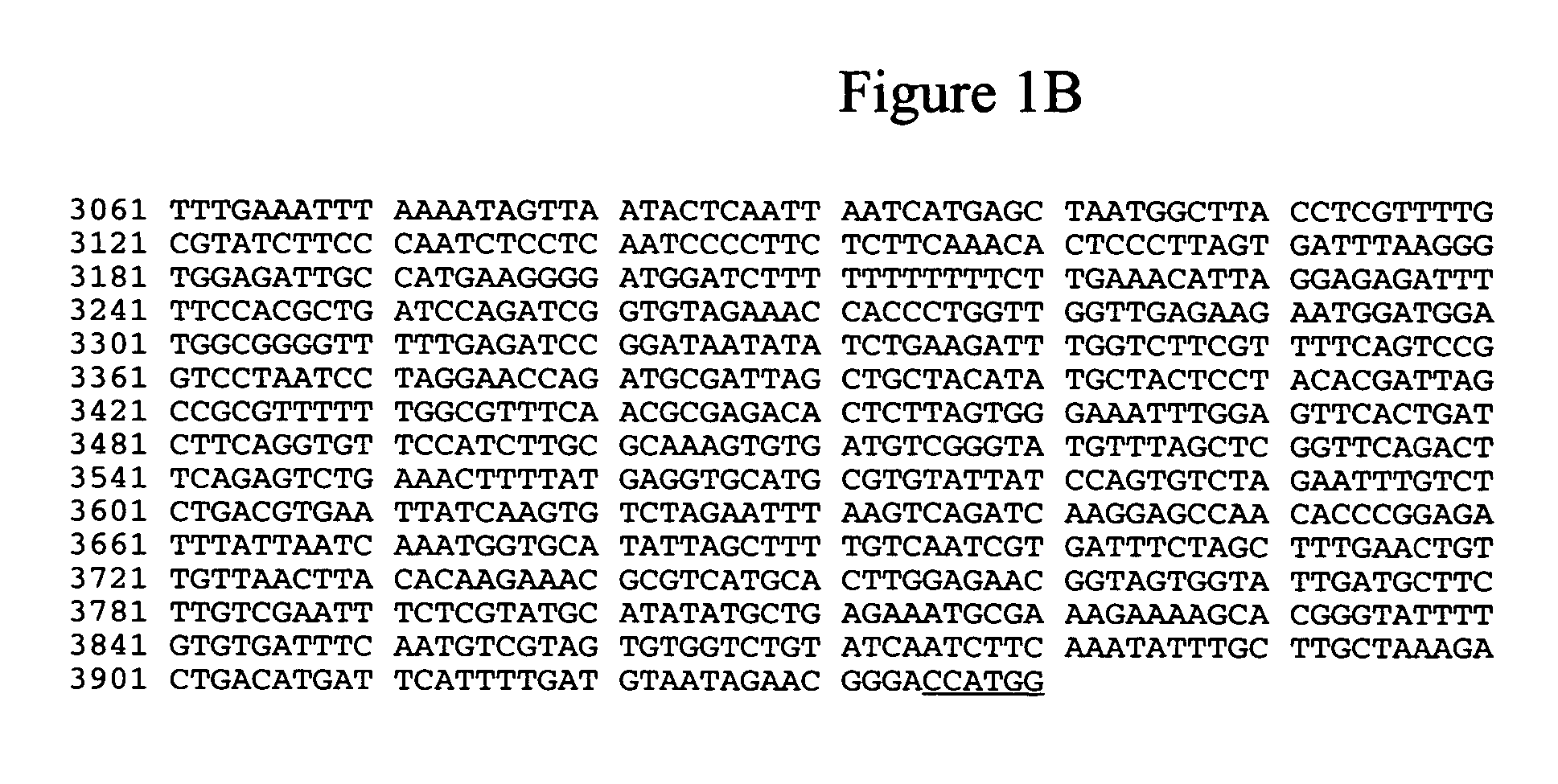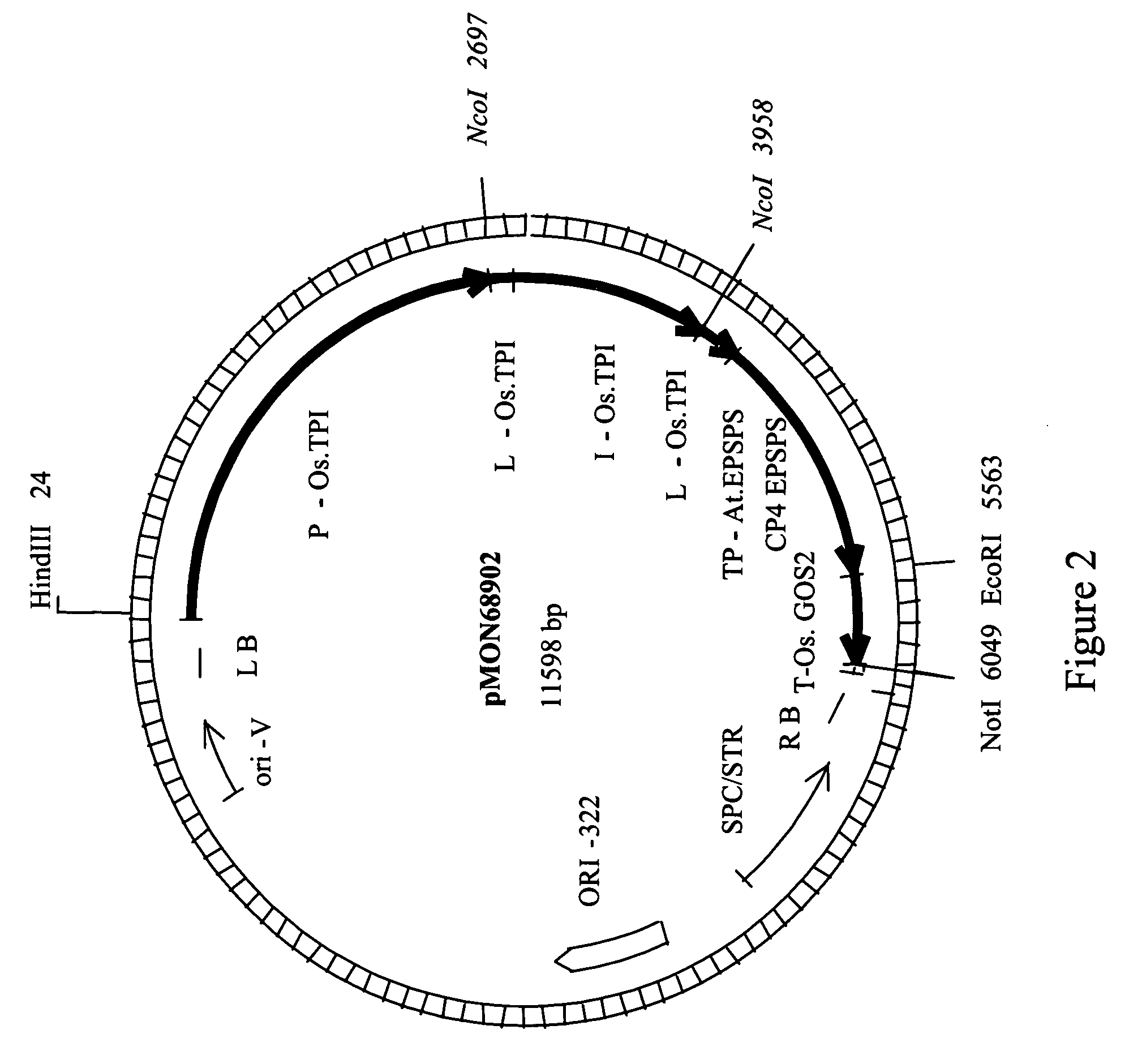Promoter from the rice triosephosphate isomerase gene OsTPI
a triosephosphate isomerase and promoter technology, applied in the field of promoters from the rice triosephosphate isomerase gene ostpi, can solve the problems that many previously identified promoters fail to provide the patterns or expression levels required to fully realize the benefits
- Summary
- Abstract
- Description
- Claims
- Application Information
AI Technical Summary
Benefits of technology
Problems solved by technology
Method used
Image
Examples
example 1
Promoter Isolation and DNA Constructs
[0055]Cytosolic triosephosphate isomerase (TPI) was characterized as a single copy gene with constitutive expression. The present invention comprises elements of the rice TPI gene including promoter, introns and leaders, for the incorporation into plant expression cassettes. Examination of 3′ UTR's from rice EST libraries indicated that most of these libraries contain at least one representative TPI sequence and hence, supported the hypothesis of a broad expression profile (Table 1). Moreover, rice Act1 (U.S. Pat. No. 5,641,876), a known constitutive promoter with a broad expression profile, has a profile where most of the libraries contain at least one representative Act1 sequence. TPI mRNA was then used to BLAST against assembled rice BAC sequences to identify the corresponding genomic sequences. Two BACs, OSM19526 and OSM19525 containing the 5′ and 3′ portions of the TPI gene, respectively, were found.
[0056]
TABLE 1Occurrence of respective 3′ U...
example 2
Promoter Characterization in Transient Systems
[0060]For GUS activity characterization, the plant transformation vector pMON78367, as shown in FIG. 3, contains the GUS reporter gene (Jefferson et al., Biochem. Soc. Trans. 15: 17–19, 1987) as the transgene of interest.
[0061]The plant expression vector pMON78367, using particle bombardment, was used to transform maize callus. The GUS activity was then quantitatively evaluated, through the Mug method for in plant promoter characterization. This method provides a quantitative analysis of the GUS expression in the transgenic plant cells. Total protein is extracted from each sample, measured and concentration adjusted such that each sample contains the same amount of total protein. Total protein is assayed using the BIO-RAD Protein Assay kit. Serial dilutions of BSA protein from 0.05 mg / ml to 0.5 mg / ml are used for the standard curve. The MUG assay uses 500 μl of GUS extraction buffer added to the tissues, and tissues are ground with a TEF...
example 3
Promoter Characterization in Transgenic Plants
[0064]The construct pMON68902 was used to transform corn, using Agrobacterium tumefaciens (U.S. Pat. No. 6,603,061). Approximately, 25 transformed corn plants (event) per construct were generated. The corn events were selected on glyphosate containing medium, transferred to soil and subsequently moved to the greenhouse. The corn events were sprayed with glyphosate (0.84 kg acid equivalents ha−1) using the Roundup® Ultra (Monsanto Company, St. Louis, Mo.) formulation at approximately the V4 leaf stage. The corn events that survived without injury (<10% chlorosis and malformation) were kept and transferred to large pots. At approximately the V8 stage, a second similar glyphosate application was performed. This second spray was to evaluate male reproductive tolerance. The corn events from pMON68902 were scored for male fertility upon maturation of the tassels. The Male Fertility Rating (MFR) is scored in a range of 1 to 5, where 1 is used w...
PUM
| Property | Measurement | Unit |
|---|---|---|
| temperatures | aaaaa | aaaaa |
| temperatures | aaaaa | aaaaa |
| temperature | aaaaa | aaaaa |
Abstract
Description
Claims
Application Information
 Login to View More
Login to View More - Generate Ideas
- Intellectual Property
- Life Sciences
- Materials
- Tech Scout
- Unparalleled Data Quality
- Higher Quality Content
- 60% Fewer Hallucinations
Browse by: Latest US Patents, China's latest patents, Technical Efficacy Thesaurus, Application Domain, Technology Topic, Popular Technical Reports.
© 2025 PatSnap. All rights reserved.Legal|Privacy policy|Modern Slavery Act Transparency Statement|Sitemap|About US| Contact US: help@patsnap.com



